
Why Does It Take So Long To Go from Mouse to Man?
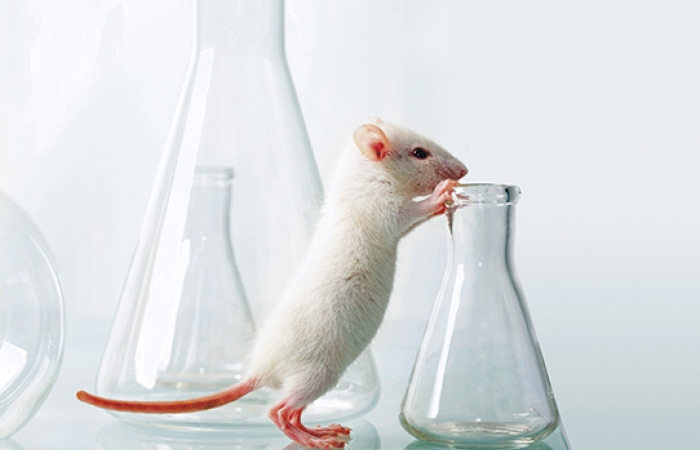
The pace of research can seem unreasonably slow; here are a few reasons why
John Porter from the National Institutes of Health likes to start talks by noting, “It’s a great time to be a mouse with a neuromuscular disease.” Exciting research results are regularly reported, where a treatment appears to cure one neuromuscular disease or another in a mouse — yet there are few treatments available today for people with any of these diseases, and only a few treatments in human clinical trials. Why does it take so long?
A lot of work goes into the time between discovering that a drug works in a mouse and testing that drug in a clinical trial. This is not “lost” time. It is time spent ensuring that the drug has the best possible chance of having an effect on the disease and the lowest possible chance of causing harm. This work is termed “preclinical research,” and it encompasses an array of steps. Even the most efficient and lucky of drug developers take a minimum of two years to get through this process.
Although frustrating, these steps are necessary to getting a safe and effective drug to patients. The developers must do toxicology studies to show the U.S. Food and Drug Administration (FDA) that the drug is relatively safe; they must show that the drug is likely to be effective; and they must determine how to administer the drug and how much to give.
Furthermore, curing a mouse is not the same thing as curing a person. Animal models of a disease are just that — models. For example, the SOD1 mouse for amyotrophic lateral sclerosis (ALS) is a good model of one inherited form of ALS. But it’s unclear how well the SOD1 mouse mimics the more-common uninherited (sporadic) form of ALS, making it quite possible that a treatment that works in the SOD1 mouse will not work in those with sporadic ALS.
Similarly, the mdx mouse used for Duchenne muscular dystrophy (DMD) research has a genetic flaw similar to that found in humans with DMD. But the mouse’s symptoms are not very severe. This makes it hard to determine if a drug is helping the mouse, and again can result in a drug that works in the mouse but not in patients.
Preclinical work aims to minimize this risk by finding out as much as possible about the drug before it is given to a person.
On average, preclinical research takes five to seven years and costs several million dollars to complete, according to FasterCures (a nonprofit organization dedicated to increasing the speed of drug discovery across all therapeutic areas). Once this work is done, the drug developer can apply to the FDA for approval to start clinical trials by submitting an investigational new drug application (IND). If the IND is approved, the developer is cleared to start clinical trials.
These trials take another five to seven years to complete (and many more millions of dollars), before the developer can ask the FDA for approval to bring a drug to market.
On average, it takes a drug about 12 years to get from discovery to market, and it costs about $1.8 billion per drug that works. Only about one drug in 10,000 actually makes it. However, due to the rigorous processes of preclinical research, about one in five drugs that get an IND eventually make it through trials.
So, what’s going on, and can we speed this up?
Optimization: Finding the best compound
 This is the first stage of preclinical research. “Optimization” refers to a series of steps whereby the drug is made better, usually in a series of experiments in which the original molecule is chemically tweaked.
This is the first stage of preclinical research. “Optimization” refers to a series of steps whereby the drug is made better, usually in a series of experiments in which the original molecule is chemically tweaked.
Each new drug made is tested to see if it is more effective than the original, or has other more desirable properties. Is it less likely to cause harm? Better able to get into the part of the body that needs it? More potent so that less drug will be needed to get the same effect?
Each new series of compounds is tested until the developer decides that he or she has the “optimal” compound selected — the one with the best chance of working with the lowest chance of side effects. This compound is called the “development candidate.” One or more development candidates may be brought forward.
ADME: Is it ‘druggable’?
 “ADME” stands for absorption, distribution, metabolism and excretion. This step, which usually goes alongside optimization, includes standard studies to find out how “druggable” a compound is — that is, can it be turned into a drug that is prescribed by a doctor?
“ADME” stands for absorption, distribution, metabolism and excretion. This step, which usually goes alongside optimization, includes standard studies to find out how “druggable” a compound is — that is, can it be turned into a drug that is prescribed by a doctor?
ADME studies show:
- if a compound is stable (will it degrade while sitting in the hospital pharmacy before it gets to the patient?);
- determine what happens if it does degrade (will it turn into something toxic?);
- determine where it goes in the body (does it go to the muscle where it is needed, or accumulate in the liver where it is not?);
- and determine what happens to the drug inside the body over time (will it build up until it becomes toxic, or will the patient excrete any excess?).
If a compound fails ADME studies, a different development candidate may succeed, so a developer may return to optimization. At the end of this stage, the developer has a lead compound that has drug-like properties that can be developed further.
Depending on the type of therapy being studied, delivery may be very simple or very complex. What method of delivery is feasible depends both on the nature of the therapeutic and on where the drug needs to go in the body to work.
Delivery: What’s the best way to give the drug?
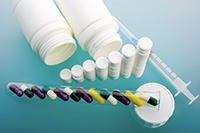 Ideally, most drugs would be in the form of a pill taken once a day (or less frequently), but not all drugs can be given this way. Some drugs, such as protein therapeutics, would be digested in the gut, so they have to be given in other ways — perhaps intravenously, or injected under the skin (subcutaneously).
Ideally, most drugs would be in the form of a pill taken once a day (or less frequently), but not all drugs can be given this way. Some drugs, such as protein therapeutics, would be digested in the gut, so they have to be given in other ways — perhaps intravenously, or injected under the skin (subcutaneously).
Other drugs need to get into specific tissues of the body at high concentrations, and the best way to get them there is to inject them directly (this is often the case where drugs are needed in the brain and spinal cord, such as for ALS or spinal muscular atrophy (SMA), as there are barriers between these tissues and the rest of the body which are impermeable to many molecules).
The MDA-sponsored study of ISIS-SOD1Rx in ALS is an example of a drug that needs to be in the central nervous system, so it took the investigators some time to determine how best to administer it. This drug is now in clinical trials using “intrathecal” administration, directly to the cerebrospinal fluid.
Sometimes a low level of a drug could be achieved by swallowing a pill, but you need the drug at high concentrations in a particular tissue, such as an individual muscle, so the best bet is to directly inject the drug into that muscle. So, developers have to carefully evaluate how the drug is best delivered — if the drug doesn’t get to high-enough levels where it is needed, it won’t work. If the drug reaches too-high levels, the developer risks it causing harmful effects.
At the end of this stage, the developer knows how the drug will be administered.
Pharmacokinetics and pharmacodynamics: Determining dosage and timing
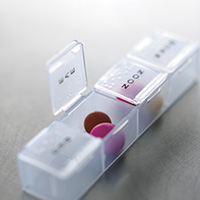 These studies investigate what happens to the drug after delivery. How long does the drug stay in the tissues? How often do you have to give it for the concentration in that tissue to stay above the level that is thought to be effective? How much drug, and how often do you need to give it to get a level in the tissue that works, and what dose causes side effects?
These studies investigate what happens to the drug after delivery. How long does the drug stay in the tissues? How often do you have to give it for the concentration in that tissue to stay above the level that is thought to be effective? How much drug, and how often do you need to give it to get a level in the tissue that works, and what dose causes side effects?
Essentially, these studies determine how much drug should be given, how often. These studies are typically done in animal models, and there are calculations that predict how to convert the amount given to an animal to the amount that should be given to humans.
Different drugs that act in similar ways (such as the exon-skipping drugs developed by AVI BioPharma and by Prosensa) may have different results, and these can really affect how much drug is given, and if there is the potential for toxicity. These studies are usually done in more than one type of animal to get the best possible estimations, but the results often still do not directly correlate to human doses.
Clinical trials still often include multiple-dose groups (starting with low doses for safety), but the animal studies suggest an approximate range of doses that are hoped to be effective.
At the same time, the developer studies what is happening to the drug inside the animal — where does it go, and how much active drug is there in the places that matter? Do toxic levels accumulate anywhere? At the end of this stage, the developer knows approximately what doses of drug to test in humans.
Formulation: Getting all the right ingredients
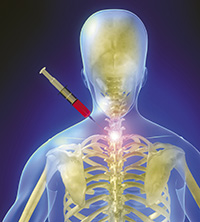 This step goes along with delivery and dosing, and refers to how to make the final drug. Any drug that you take includes ingredients other than the active drug itself — packing components that turn it into a pill, liquids to turn it into an intravenous fluid, and possibly other components that help the drug get to where it needs to go or disperse it through the tissues.
This step goes along with delivery and dosing, and refers to how to make the final drug. Any drug that you take includes ingredients other than the active drug itself — packing components that turn it into a pill, liquids to turn it into an intravenous fluid, and possibly other components that help the drug get to where it needs to go or disperse it through the tissues.
Developing a safe formulation that helps the drug get to the right place can be critical in making the drug actually have an effect in people.
For example, the utrophin upregulation drug developed by Summit Plc and BioMarin showed no effect in phase 1 trials, but Summit still believes that the active ingredient works. Unfortunately, an ineffective formulation meant that not enough drug ever reached the muscle to have any chance of working. The company is hoping to find a better formulation and keep developing the compound for DMD.
At the end of the formulation stage the developer has a drug that can be shipped to a clinical trial site and administered.
Toxicology: What are the side effects?
This is perhaps the most obvious stage of preclinical development — determining if the drug has unwanted side effects that will preclude development. Typically, a developer will do some toxicology studies early on during the optimization stage to see if the drug has a reasonable safety profile — there’s no point in bringing forward an unsafe candidate.
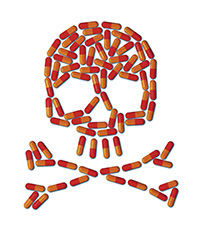 More formal toxicology is done later on with the final drug substance that will be used in clinical trials, in case there are toxic effects of the drug when combined with other ingredients in the formulation.
More formal toxicology is done later on with the final drug substance that will be used in clinical trials, in case there are toxic effects of the drug when combined with other ingredients in the formulation.
During toxicology studies, developers look at many different doses. Typically they will attempt to find an upper dose which is toxic, to know how far they can push the dose in people (which will be to a level significantly less than the level where they first saw adverse events in animals).
Early versions of these studies inform the company as to what types of delivery are feasible while later studies support the probability that the trial will be safe.
There are standard tests mandated by the FDA that are required for all drugs, as well as more generalized animal studies to look for unexpected signs of toxicity. Developers pay careful attention to any toxicity that might be caused by the drug’s action (e.g., if working with a growth factor that increases the growth of blood vessels, you would be looking for any signs of bleeding).
Toxicology studies that are required before a short phase 1 safety study may be relatively short (e.g., 12-week studies in mice), but the FDA requires longer studies prior to initiation of longer studies, in case toxic effects take a while to become obvious.
Obviously, not all safety issues will show up in animal studies. Sometimes, as was the case for ACE-031, Acceleron’s drug for DMD, signs of a side effect were not recognized until the drug was already administered to patients. When minor bleeding was observed in some trial participants, the company stopped the trial and now is trying to resolve the issue in animal models. Toxicology studies are designed to reduce the chances of this happening.
Manufacturing: Can you produce a consistent drug in large amounts?
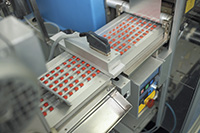 This is one of the more mundane stages of drug development, but nonetheless crucial.
This is one of the more mundane stages of drug development, but nonetheless crucial.
You only have to be one of the individuals with Pompe disease who couldn’t get the lifesaving drug Myozyme when its developer, Genzyme, had issues with its manufacturing sites to know that there is not much use in a treatment if there is none available. And no one would want to take a drug that may or may not include toxic ingredients, or a variable amount of the active ingredient.
Thus, even at the preclinical stage, the developer has to be able to show that he or she can produce exactly the same drug substance each and every time, even when they ramp up production to much larger amounts than needed to test it in a few mice.
This sounds simple, and indeed may be simple, in the case of a small molecule produced by a simple chemical process. It is much more complicated for a complex biologic drug like Myozyme, where even tiny changes in the manufacturing process can change the drug. That is why, when Genzyme opened a new plant to make Myozyme, it was treated as a new drug (called Lumizyme), and had to go through approvals again.
Companies must demonstrate that they have a robust protocol to make their drug, and the ability to make enough uniform drug for clinical trials.
Clinical trial design: Safety first
At this point, the developer has all the information it needs about the drug, but the FDA still wants to assess one more thing: the developer’s plans for clinical trials.
The FDA’s primary concern is to protect trial participants. The agency will require that the developer start testing the drug at very low doses to look for any signs of toxicity, often in healthy volunteers instead of people with the disease, before moving up to doses that might be effective. This may seem unnecessary after all the testing in animals, but remember that mice are not humans, and drugs that cause no issues in other animals may be toxic in people.
The FDA also will make sure that the trial is well designed, so as to have the best chance of yielding useful information about the drug with minimal risk to the trial participants. Developing a trial protocol can take some time, while the drug developer consults with physicians about the best way to run the trial, and what measurements need to be made to give as much information as possible with minimum disruption to patients.
IND submission: Asking for permission
At the end of all of this work, the developers think that the drug is ready to be tested in humans.
They can make it in a uniform manner in a form that can be given to people. They know a range of doses that are predicted to be safe in humans, and know that there are doses in this range that would be expected to have a therapeutic effect. They know how to administer the drug to participants, and what markers to look for to see if it is having an effect. They have a feasible trial design, patients who want to take part and clinicians willing to run the trial.
At this point, the developer has the data that is needed to ask the FDA for approval to move forward.
If all this data is approved by the FDA, the drug will be allowed to start trials. That’s when it gets exciting — what happens to the drug in a human being? Will it work?
Speeding up the process
Clearly, preclinical development is very involved and takes a significant amount of time. MDA’s goal is to accelerate the process as much as possible in order to get drugs to people quickly — but only in such a way that those drugs are both safe and effective. How can we speed this up? Obviously, a 24-week toxicology study can’t take less than 24 weeks, and the FDA-mandated studies have to be completed.
 There are two places where time may be saved. First, we lose time when a developer can’t move forward with preclinical research due to lack of money. MDA Venture Philanthropy (MVP), MDA’s program for drug development, helps by providing funding for these kinds of studies for the most promising therapeutics in a time-efficient manner.
There are two places where time may be saved. First, we lose time when a developer can’t move forward with preclinical research due to lack of money. MDA Venture Philanthropy (MVP), MDA’s program for drug development, helps by providing funding for these kinds of studies for the most promising therapeutics in a time-efficient manner.
Second, considerable time and money can be lost if a developer is not doing the right studies, or doing them on the wrong drug candidate. MVP tries to reduce this waste through the use of expert advisers.
They analyze each proposal (funded or otherwise) and offer suggestions as to how to do the experiments better, or how to get better information out of each study. They also link the developers to other experts, who may be able to help them perform the experiments better, or come up with better solutions to the problems that inevitably come up. Finally, they put in place “milestones” (goals that must be met by certain times) to keep the developer on track and help the drug to move forward as efficiently as possible.
The process is slower than we would like. But it is essential in order to get a safe and effective drug into clinical trials — and ultimately into the hands of the people who need it.
Jane Larkindale is MDA’s director of translational research.
MDA Resource Center: We’re Here For You
Our trained specialists are here to provide one-on-one support for every part of your journey. Send a message below or call us at 1-833-ASK-MDA1 (1-833-275-6321). If you live outside the U.S., we may be able to connect you to muscular dystrophy groups in your area, but MDA programs are only available in the U.S.
Request Information